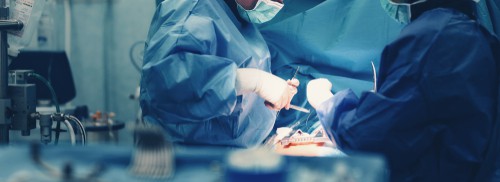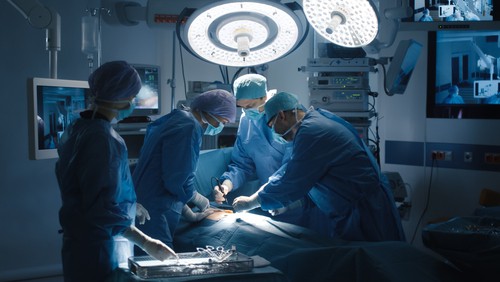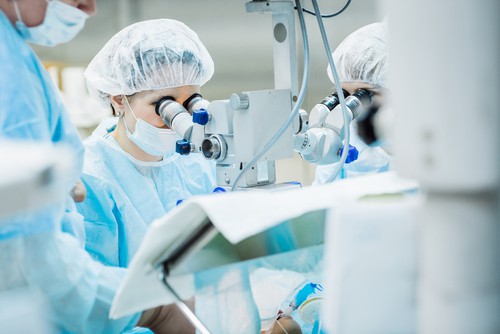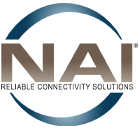
27 Oct Advances in Medical Fiber Optic Instruments for Improving Patient Care
Healthcare is ubiquitous and ever-changing. Improvements in imaging, patient care, patient data collection, surgical procedures, tools, and equipment are changing how we view and execute patient healthcare. Continue reading to learn how fiber optics is changing medical industry technology.
World population growth and extended life spans have created a greater demand for better diagnostic and surgical tools to improve population health, surgery, and patient care. One huge development in healthcare has been the increased use of minimally-invasive surgery to minimize hospital stays and lower costs. In addition, it has also lowered the morbidity associated with more invasive surgery. And fiber optics is the technology making this all possible. It’s clear that fiber optics in medicine is here to stay. It has become the enabling technology for medicine and healthcare.
Advantages of Fiber Optics for Surgery
Medical fiber optics technology advances, such as optical engineering and imaging, have increased the use of minimally-invasive surgery. Traditional surgery requires sizable and invasive incisions to expose internal organs and operate on affected areas. In contrast, minimally-invasive surgery involves much smaller surgical incisions, leaving the tissues more intact. In addition, the recovery process is significantly shortened and less complicated. The physicians rely on disposable fiber-optic catheter assemblies with video and surgical instrumentation to accomplish this.
Some optic instruments were developed as far back as the nineteenth century. However, when optical fibers and light sources were developed in the mid-1900s, that spawned the development of many new medical devices and tools. Later, optical fiber imaging tools became widely accepted for invasive surgery. However, fiber optic cables in medical devices have the potential to be used in many more applications, such as:

Fiber optics provides many advantages for invasive, minimally-, or non-invasive surgery.
- Remote spectrophotometry
- Endoscopic imaging
- Pressure and position sensing
- Scintillation counting
- Intravascular pressure transducers
- In vivo oximeters
Fiber optics work well for use as intelligent sensors to monitor temperature, pressure and oxygen concentration.
Advantages of Fiber Optics Sensing
The advantages of using fiber optics over electronic sensors in medical applications are many. Here are a few of the benefits:
- Its small size
- immunity to EM
- greater sensitivity
- geometrical versatility
- general robust characteristics
Safe for health monitoring, fiber optics used in sensing tools are also very stable and biocompatible. They can be sterilized and autoclaved. Another big advantage of using fiber optics is that it can act as the sensor itself, transmitting signals to monitoring equipment.

Fiber optic instrumentation in ophthalmology.
Without using electrical parts or conductors, fiber optic cable is free from electrical hazards in the sensing area. Fiber optic medical sensors have proven to be ideal for use many areas of medical practice, including angiology, cardiovascular exams, ophthalmology, and dentistry.
As an inert material, the glass fiber resists many chemicals, so it’s well suited for use in in-vitro and in-vivo applications. Because surgical theaters have all kinds of equipment producing EMI, the use of fiber is reliable for life-support and mission critical in this situation, due to its immunity to EMI.
Yet, the greatest advantage for fiber is its size. It can be miniature, flexible, and light in weight. This makes it ideal for space-restricted applications, such as catheters.
Advantages and Disadvantages of Optical Fiber Coatings
Other benefits medical fiber optic technology include the properties of the coatings placed onto the fiber. The coating adds strength and allows for tight geometrical tolerances. It also features temperature resistance.
Drawbacks include the requirement for special tools for assembly and sensitivity of the fiber during handling. A capable fiber optic cable assembly supplier can take on these issues.
Tight Bend Tolerance for Invasive Surgery
Another advantage of fiber optics is its tolerance to tight bends. This makes it an appropriate medium for use in invasive surgery. As a result, a catheter can move freely around organs and bones, and travel easily through veins and arteries. There are minimum bend radii restrictions, but again, a medical cable assembly manufacturer can help design the right fiber type, size, and other specifications to optimize surgical latitude.
Specialty Fibers for New Sensing Concepts
Likewise, unique specialty fiber types are facilitating the development of entirely new sensing concepts. A surgeon needs information about the shape, direction, and position of an instrument during minimally-invasive surgery. Specialty medical fiber optics help provide new solutions for these requirements.
The increased use of medical fiber optic technology has also advanced medical technology overall. The result is that physicians receive better information during surgery, allowing for improved surgical outcomes and improved population health.
For more information:
Fiber optics for noninvasive surgical use
Robotic surgery
Fiber optics in Endoscopes
Medical fiber optics and medical sensors

